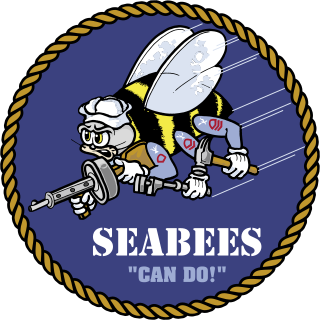
United States Naval Construction Battalions, better known as the Navy Seabees, form the U.S. Naval Construction Force (NCF). The Seabee nickname is a heterograph of the initial letters "CB" from the words "Construction Battalion". Depending upon context, "Seabee" can refer to all enlisted personnel in the USN's occupational field 13 (OF-13), all personnel in the Naval Construction Force (NCF), or Construction Battalion. Seabees serve both in and outside the NCF. During World War II they were plank-holders of both the Naval Combat Demolition Units and the Underwater Demolition Teams (UDTs). The men in the NCF considered these units to be "Seabee". In addition, Seabees served as elements of Cubs, Lions, Acorns and the United States Marine Corps. They also provided the manpower for the top secret CWS Flame Tank Group. Today the Seabees have many special task assignments starting with Camp David and the Naval Support Unit at the Department of State. Seabees serve under both Commanders of the Naval Surface Forces Atlantic/Pacific fleets as well as on many base Public Works and USN diving commands.
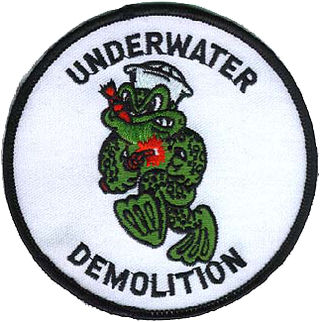
Underwater Demolition Teams (UDTs), or frogmen, were amphibious units created by the United States Navy during World War II with specialized non-tactical missions. They were predecessors of the navy's current SEAL teams.
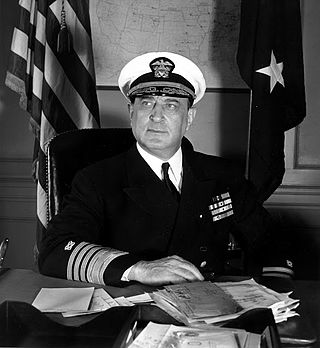
Admiral Ben Moreell was the chief of the U.S. Navy's Bureau of Yards and Docks and of the Civil Engineer Corps. Best known to the American public as the father of the Navy's Seabees, Moreell's life spanned eight decades, two world wars, a great depression and the evolution of the United States as a superpower. He was a distinguished naval officer, an engineer, an industrial giant and a national spokesman.
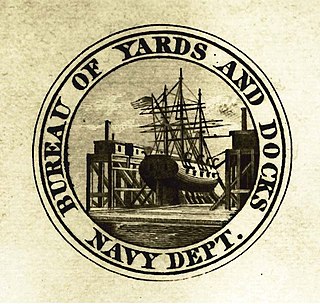
The Bureau of Yards and Docks was the branch of the United States Navy responsible from 1842 to 1966 for building and maintaining navy yards, drydocks, and other facilities relating to ship construction, maintenance, and repair.

The Civil Engineer Corps (CEC) is a staff corps of the United States Navy. CEC officers are professional engineers and architects, acquisitions specialists, and Seabee Combat Warfare Officers who qualify within Seabee units. They are responsible for executing and managing the planning, design, acquisition, construction, operation, and maintenance of the Navy's shore facilities. The Civil Engineer Corps is under the command of the Chief of Civil Engineers and Commander, Naval Facilities Engineering Systems Command. On 12 August 2022, RADM Dean VanderLey relieved RADM John W. Korka, becoming the 46th commander of NAVFAC and Chief of Civil Engineers.
Hispanics in the United States Naval Academy account for the largest minority group in the institution. According to the academy, the Class of 2009 includes 271 (22.2%) minority midshipmen. Out of these 271 midshipmen, 115 are of Hispanic heritage. In 2004, of the total of 736 female midshipmen, 74 (10%) of them were of Hispanic descent.
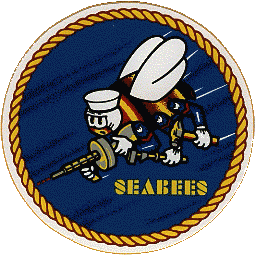
When World War II broke out the United States Naval Construction Battalions (Seabees) did not exist. The logistics of a two theater war were daunting to conceive. Rear Admiral Moreell completely understood the issues. What needed to be done was build staging bases to take the war to the enemy, across both oceans, and create the construction force to do the work. Naval Construction Battalions were first conceived at Bureau of Yards and Docks (BuDocks) in the 1930s. The onset of hostilities clarified to Radm. Moreell the need for developing advance bases to project American power. The solution: tap the vast pool of skilled labor in the U.S. Put it in uniform to build anything, anywhere under any conditions and get the Marine Corps to train it. The first volunteers came skilled. To obtain these tradesmen, military age was waived to age 50. It was later found that several past 60 had managed to get in. Men were given advanced rank/pay based upon experience making the Seabees the highest paid group in the U.S. military. The first 60 battalions had an average age of 37.

Rear Admiral Wayne "Greg" Shear Jr. is a former Chief of Civil Engineers for the United States Navy. He previously served as Deputy Commander for Operations, Naval Facilities Engineering Command.

Naval Base Guam is a strategic U.S. naval base located on Apra Harbor and occupying the Orote Peninsula. In 2009, it was combined with Andersen Air Force Base to form Joint Region Marianas, which is a Navy-controlled joint base.
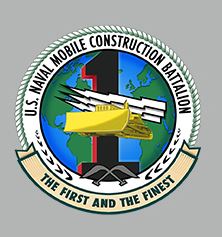
Naval Mobile Construction Battalion 1, is a United States Navy Seabee battalion. NMCB ONE, the original "Pioneers", has a long, proud and distinguished history as the very first Naval Construction Battalion of the service that would become known as the Seabees.
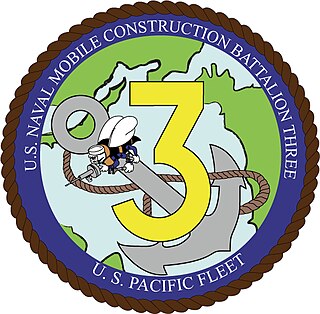
Naval Mobile Construction Battalion THREE is a United States Navy Seabee that was one of the three original Construction Battalions authorized to be formed in 1942. In May 1942 Naval Construction Battalion 3 deployed to the Territory of Hawaii and designated Brigade Headquarters Battalion for the Hawaiian Area NCF. After seeing service in the south Pacific,the battalion was decommissioned mid-1944. In 1950 the battalion was reactivated and today is home-ported at Port Hueneme, California.

Naval Mobile Construction Battalion FORTY, nicknamed Fighting FORTY, was a US Navy Seabee Battalion based out of Port Hueneme, California. Its primary mission was wartime contingency construction as well as peacetime construction and disaster relief.

Naval Mobile Construction Battalion 133 is a United States Navy Construction Battalion, otherwise known as a Seabee Battalion, homeported at the Naval Construction Battalion Center. The unit was formed during WWII as the 133rd Naval Construction Battalion. It saw action and was decommissioned shortly after the war ended. The unit was reactivated as Mobile Construction Battalion 133 for the Vietnam War and remains an active unit today.

Naval Mobile Construction Battalion SEVEN (NMCB 7) was a Navy Seabee battalion last homeported at Naval Construction Battalion Center, Gulfport Mississippi. Nicknamed the "Magnificent Seven", it is one of the first ten Naval Construction Battalions formed by the U.S. Navy in 1942.

Naval Mobile Construction Battalion TWO SIX was a United States Navy Seabee battalion commissioned in 1942 for support to Naval Operations in the Pacific Theater in World War II and later a Reserve Naval Construction Battalion based in various locations in the Midwest from 1962 until 2014.

Naval Mobile Construction Battalion 11 is a United States Navy Construction Battalion, otherwise known as a Seabee Battalion, presently home-ported at the Naval Construction Battalion Center. The unit was formed during World War II as the 11th Naval Construction Battalion at Camp Allen on 28 June 1942. On 1 July, she moved to the new Seabee base Camp Bradford. Seabee battalions were numbered sequentially in the order they were stood up. The battalion lost one man during the war to a construction accident. The 11th CB was inactivated on 1 December 1945, at Subic Bay, Philippines.
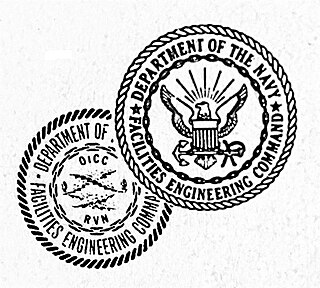
Officer in Charge of Construction, Republic of Vietnam, was a position established by the U.S. Navy Bureau of Yards and Docks in 1965 to manage the large construction program in South Vietnam assigned to RMK-BRJ, a consortium of four of the largest American construction companies. This construction program was to prepare the infrastructure in South Vietnam to allow escalation of U.S. troop levels into Vietnam during the Vietnam War and supply them with facilities and matériel. This program became the largest construction program and contract in history up to that time. The position ended in 1972 with the completion of the RMK-BRJ contract. The result was a transformation of southern Vietnam from an area of little infrastructure to the industrial country today that continues to rely on the new ports, airfields, highways, and bridges constructed under this program. As the journalist Richard Tregaskis put it, the bases built under this huge construction program “had the interesting collateral effect of preparing her way [Vietnam] for a catapult-style launching into the modern age.”

Naval Construction Battalion 5 was commissioned on May 25, 1942 at Camp Allen Va. The battalion went to Port Hueneme and shipped out for the first of two deployments in the Pacific. When the war ended CB 5 was decommissioned in the Philippines. On July 10, 1951 the Battalion was re-commissioned as a MCB and remains an active unit today.



















